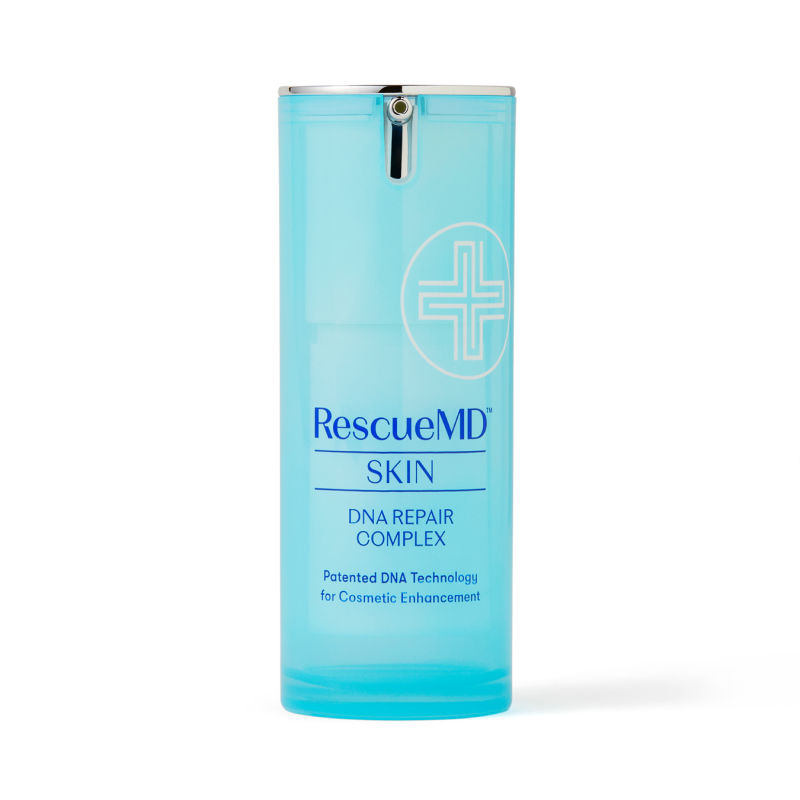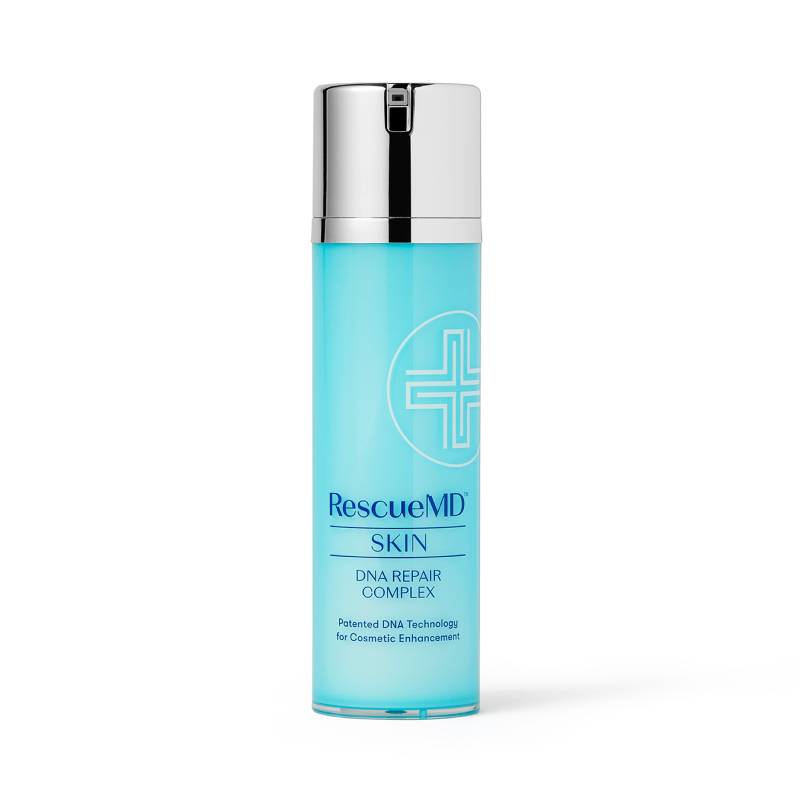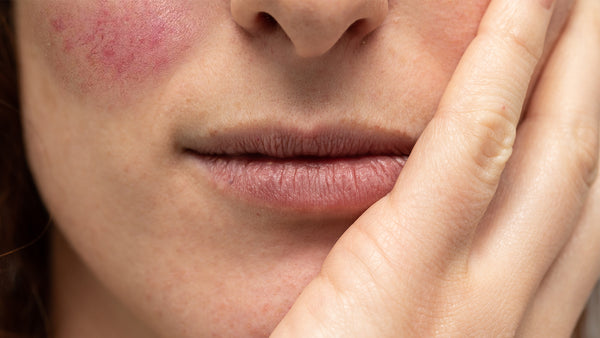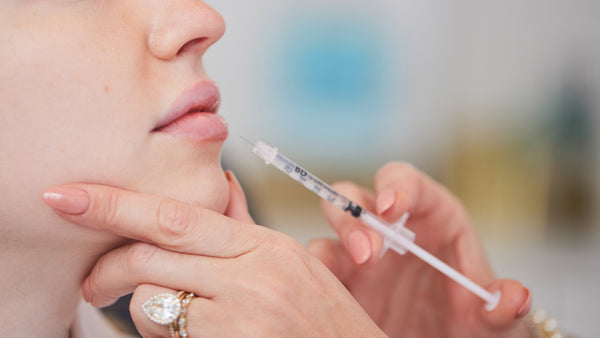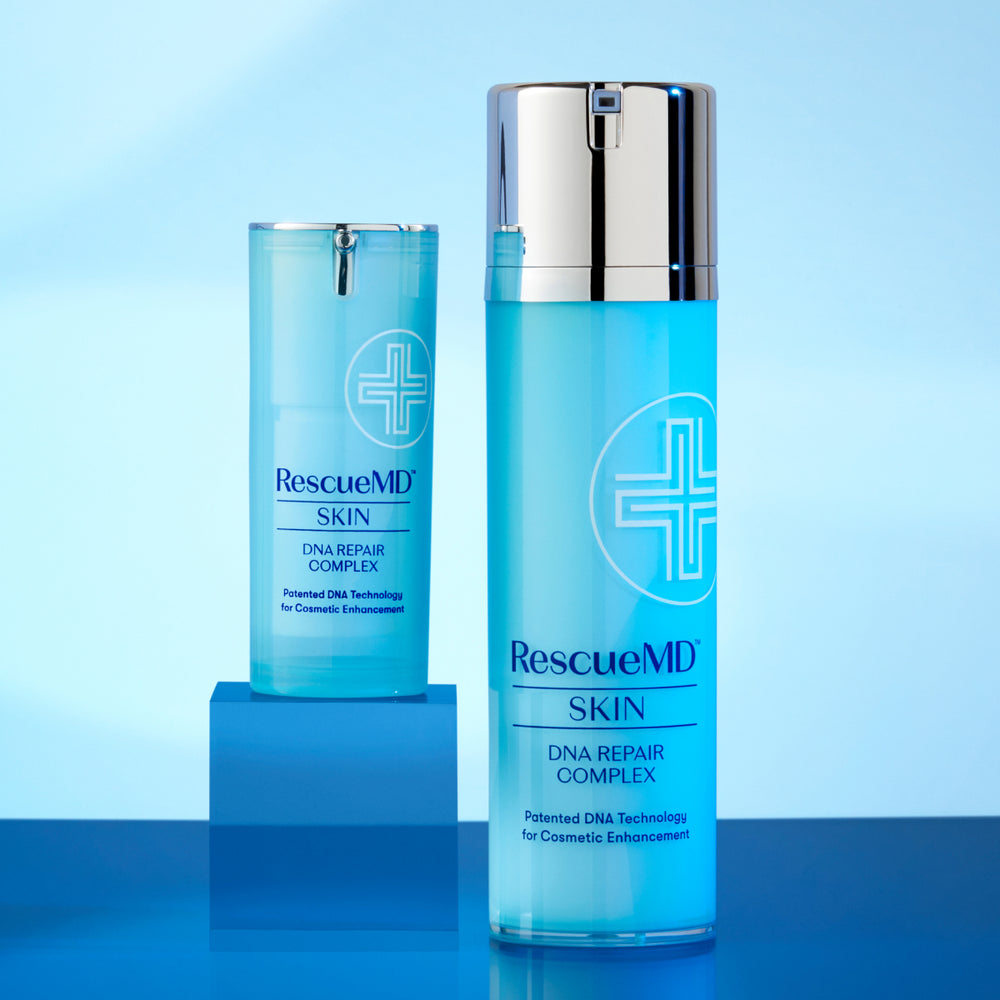What do sun spots, wrinkles and fine lines, and skin laxity all have in common? Besides being frustrating, these skin concerns are proof of DNA damage. It sounds surprising, but it’s true: Skin aging is actually untreated DNA damage that has built up over time, frequently due to careless behaviors. Luckily, there are topical products that can help. DNA repair serums use careful blends of potent, cutting-edge ingredients to help skin look healthier, smoother, and more even in tone. But before understanding how DNA repair serums work, you have to understand what happens to your skin. Keep reading to learn all about skin and DNA damage, DNA repair, and DNA repair serums.

How Do You Damage Your DNA?
By now, you’ve probably heard the term “free radicals.” Free radicals are unstable molecules that are naturally produced by the body. Sometimes, your body makes free radicals to help support your metabolism, but most commonly, the presence of free radicals is caused by exposure to toxins in your environment. Free radicals are unstable because they are missing an electron. In order to balance themselves, free radicals seek out that extra electron, stealing it from healthy cells and unfortunately damaging DNA as they do so. This is known as oxidative stress. Oxidative stress has been linked to many health issues and disorders, including diabetes and heart disease, as well as aging of the skin.
The biggest offender of DNA damage by free radicals is UV light — otherwise known as sun exposure (just one of many reasons to wear sunscreen every day). However, many other behaviors can cause free radical and DNA damage. These include smoking cigarettes, drinking alcohol frequently, and eating poorly on a regular basis. Where you live can also cause DNA damage: smog and other forms of air pollution frequently found in cities are known to cause oxidative stress.
Can DNA Damage Be Repaired?
Your body has protective measures in place to help ward off injury, DNA damage included. Specifically, when you’re exposed to free radicals and other external stressors, your body produces a protein known as CUL4A to help repair that DNA damage by stimulating natural DNA regeneration processes.
As helpful as this sounds, CUL4A isn’t perfect, and it has the propensity to work too quickly and too randomly. If you’ve ever worked too quickly, you know how easy it is to make mistakes — and CUL4A often makes mistakes by replicating damaged DNA instead of healthy DNA. On the skin, CUL4A’s inaccuracies can manifest as fine lines, wrinkles, dark spots, and other imperfections. CUL4A’s mistakes can be much more serious than that, however: Studies have shown that the presence of CUL4A has been observed in the development of certain cancers.
How Can I Repair DNA Naturally?
You know what they say — the best defense is a good offense, and proactively looking for DNA repair creams is an excellent start. It’s important to make sure that the DNA repair serum you choose contains hardworking ingredients to help improve the look of your skin. Fortunately, many of these ingredients come from nature.
One such ingredient category is antioxidants, which are molecules that fight free radicals. Luckily, antioxidants are everywhere, including your diet and your skincare routine. For example, there are antioxidant-rich foods that help repair DNA, like berries, pomegranate, cocoa, and kale — and beauty brands often add extracts of these foods to their skincare formulations to help bolster your skin against the detrimental effects of free radicals.
One ingredient that has potent antioxidant effects (including many other benefits) is pau d’arco. Pau d’arco is derived from the bark of a tree found in the Amazon. Other studies of pau d’arco show it may have anti-inflammatory and anti-microbial effects. Most notably, however, pau d’arco contains a chemical compound called lapachol that can “talk” to the CUL4A in your body and tell it to slow down, which helps prevent mistakes when your body is hard at work correcting DNA damage. Simultaneously, lapachol helps support your body’s DNA repair enzymes, so old damage is repaired properly.
What DNA Repair Serum Should I Use?
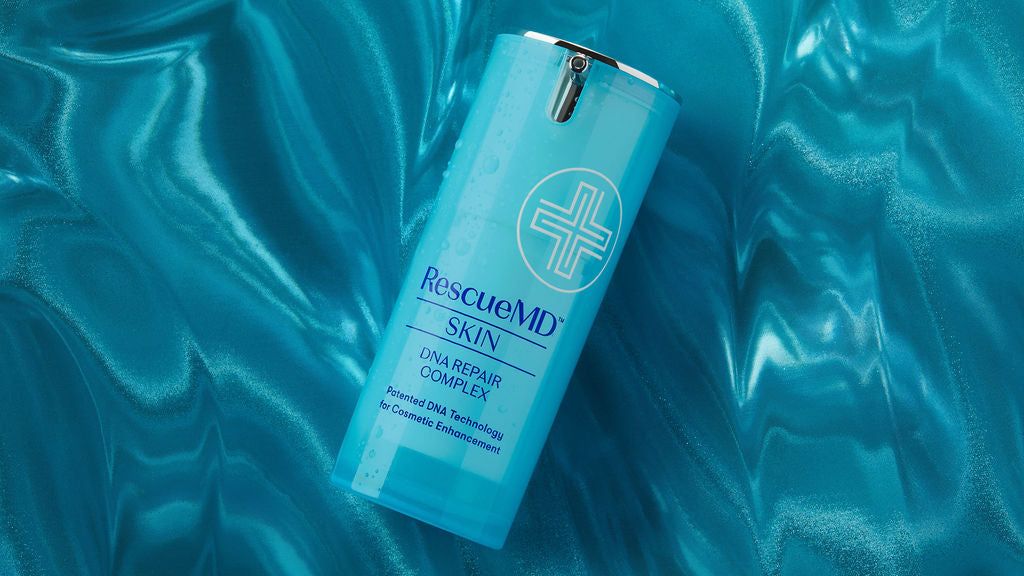
Don’t be fooled by social media marketing and overly fancy packaging — skincare products are only as powerful as their formulas and ingredients. After examining Ivy League medical lab studies demonstrating the efficacy of lapachol, it was clear to us that lapachol’s benefits needed to be harnessed in a powerful yet gentle skincare formulation to help improve the appearance of skin damage, so we developed our exclusive RescueMD Skin DNA Repair Complex, which stars lapachol, our patented ingredient.
RescueMD is the first brand to ever formulate a DNA repair serum using lapachol to help support the skin’s natural processes. To amplify lapachol’s benefits, we formulated our serum with ingredients like allantoin and dimethicone to help moisturize the skin, peptides to help firm the look of skin, and more even antioxidants to help improve the appearance of DNA damage and photoaging on the skin.
Interested in learning more about RescueMD’s proprietary technology? Learn all about how the RescueMD Skin DNA Repair Complex formula works here.

